Solving first degree trigonometric equations
Everything You Need in One PlaceHomework problems? Exam preparation? Trying to grasp a concept or just brushing up the basics? Our extensive help & practice library have got you covered. | Learn and Practice With EaseOur proven video lessons ease you through problems quickly, and you get tonnes of friendly practice on questions that trip students up on tests and finals. | Instant and Unlimited HelpOur personalized learning platform enables you to instantly find the exact walkthrough to your specific type of question. Activate unlimited help now! |
Make math click 🤔 and get better grades! 💯Join for Free
Examples
Lessons
Free to Join!
Easily See Your Progress
 We track the progress you've made on a topic so you know what you've done. From the course view you can easily see what topics have what and the progress you've made on them. Fill the rings to completely master that section or mouse over the icon to see more details.
We track the progress you've made on a topic so you know what you've done. From the course view you can easily see what topics have what and the progress you've made on them. Fill the rings to completely master that section or mouse over the icon to see more details.Make Use of Our Learning Aids
Earn Achievements as You Learn
 Make the most of your time as you use StudyPug to help you achieve your goals. Earn fun little badges the more you watch, practice, and use our service.
Make the most of your time as you use StudyPug to help you achieve your goals. Earn fun little badges the more you watch, practice, and use our service.Create and Customize Your Avatar
 Play with our fun little avatar builder to create and customize your own avatar on StudyPug. Choose your face, eye colour, hair colour and style, and background. Unlock more options the more you use StudyPug.
Play with our fun little avatar builder to create and customize your own avatar on StudyPug. Choose your face, eye colour, hair colour and style, and background. Unlock more options the more you use StudyPug.
Topic Notes
Solving First Degree Trigonometric Equations
Trigonometric Equations:
Put simply, trigonometric equations are just equations that feature the trigonometric ratios such as sine and cosine on the variable "x". Because of the presence of these trigonometric functions, solving these equations becomes a little more difficult. But, before we get into solving these trig equations, let's make sure we understand what 1st degree trig equations are! Below are a couple of examples of trig equations:
There are also other levels of trig equations, including 2nd degree trig equations. Below are a couple examples of 2nd degree trig equations:
Notice how the above equations feature our familiar polynomial format but with the addition of the trigonometric ratios sine and cosine. Now that we have an idea of what trig equations look like, let's look at how to solve first degree trig equations!
Unit Circle Table:
Oftentimes when we are dealing with first degree trig equations, we will be using the special right angles, reference angles, and the unit circle to solve for the variable x (or whatever the variable is). Below is a copy of the unit circle chart, which gives the unit circle degrees and radians.
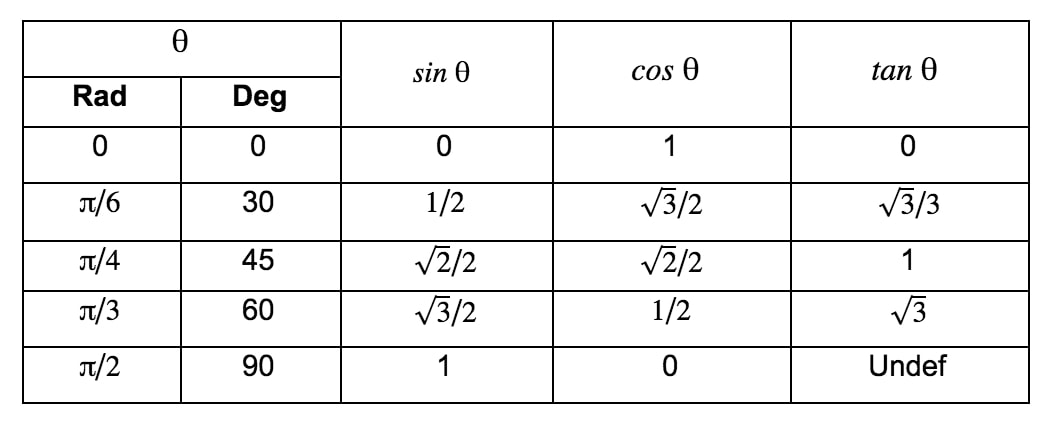
NOTE: This chart just gives the values for sine, cosine, and tangent in the first quadrant using the common reference angle. The values are based on some special triangles you should be familiar with, including the 45 45 90 triangle and the 30 60 90 triangle.
If you recall, these values will vary in their sign (+ / -) depending on which quadrant the angle is in. We can use the acronym ASTC (All Students Take Calculus) to help us to remember which trig ratio is what in each quadrant:
Lastly, it is important to recall our handy acronym SOHCAHTOA to find missing angles. Below are the formulas we get from SOHCAHTOA, as well as an image to help you visualize it:

For a review of some of these concepts in a more detailed video, check out our clips on the reference angle, the exact values of trig functions, and All Students Take Calculus. Also, see our videos on special right triangles 45 45 90 and special right triangle 30 60 90.
As always, the best way to practice is to do some examples!
Example 1:
For the following trigonometric equation, find the exact value for x for each of the following conditions:
i) For 0° ≤x≤ 360°
ii) General solution in degree measure
iii) For 0° ≤x≤2π
iv) General solution in radian measure
Step 1: Identify if a Special Angle/Triangle is Present
The presence of such angles or triangles makes find the solution much easier, as you should have these angles memorized! Notice that 23 is a special triangle:
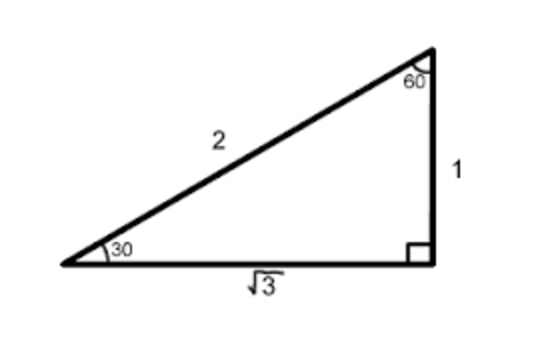
Therefore, since sine by definition is hypotenuseopposite, the reference angle for 23 is 60°.
Step 2: Use ASTC to Identify Where This Angle Exists
For sine to be positive, the angles must be in first and second quadrants.
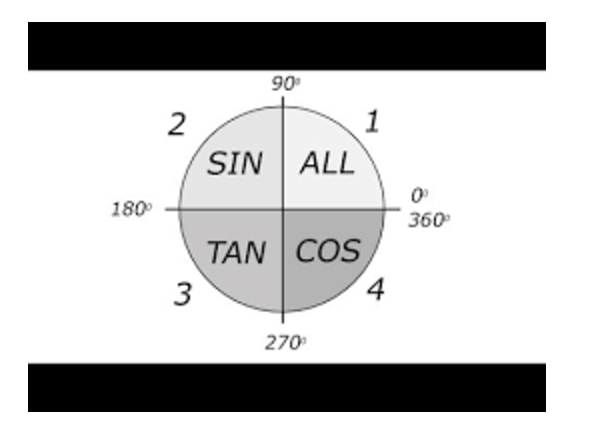
Thus, in the first quadrant, the angle is 60°. In the second quadrant, the angle is 180°- 60° = 120°
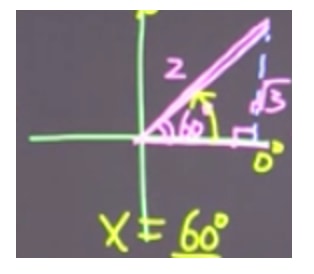
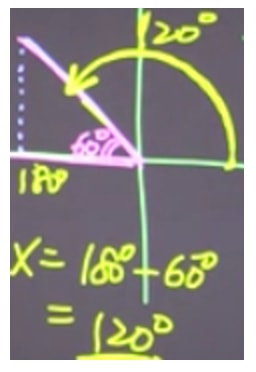
Step 3: Solve the Remainder of the Question
ii) 60° + 360°n, where n is a whole integer; 120° + 360°n, where n is a whole integer.
iii) x=3π,x=32π
* just convert answer i) from degrees to radians
iv) 3π+2πn where n is a whole integer; 32π+2πn, where n is a whole integer.
* just convert answer iii) from degrees to radians
Example 2:
For the following trigonometric equation, find the exact value for x:
In this case, since we know that −0.4 is not a special case, we must use a calculator to find x. NOTE: when solving via a calculator, first remove the sign. We can identify the quadrant using ASTC later on.
Then use reference angle and quadrants to find solutions. According to ASTC, cosine is negative in the second and third quadrants. Therefore:
And that's all there is to it! For an excellent tool to check you work, check out this useful calculator tool here. And, for further study, see our video on the derivative of trigonometric functions.
Basic Concepts
remaining today
remaining today



